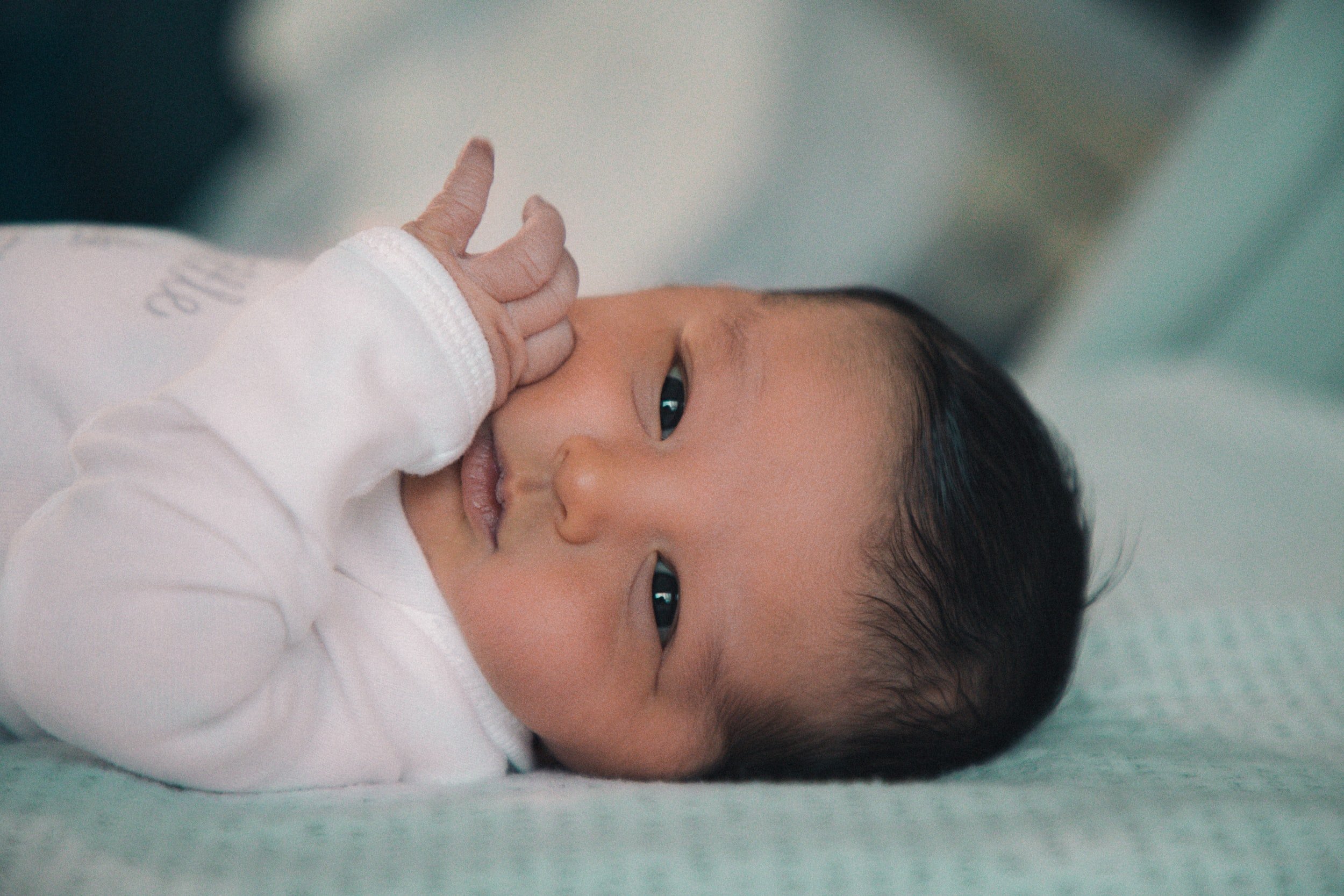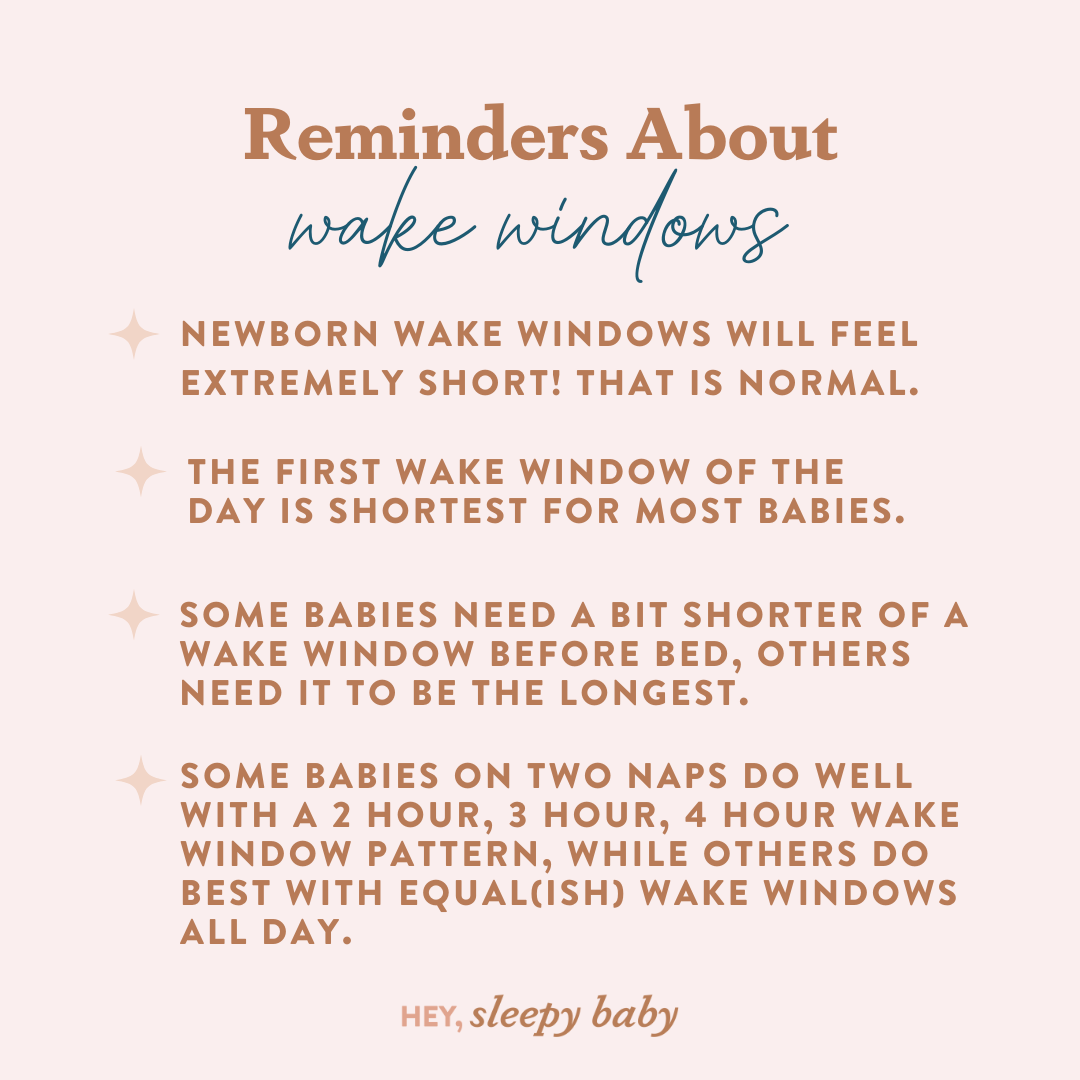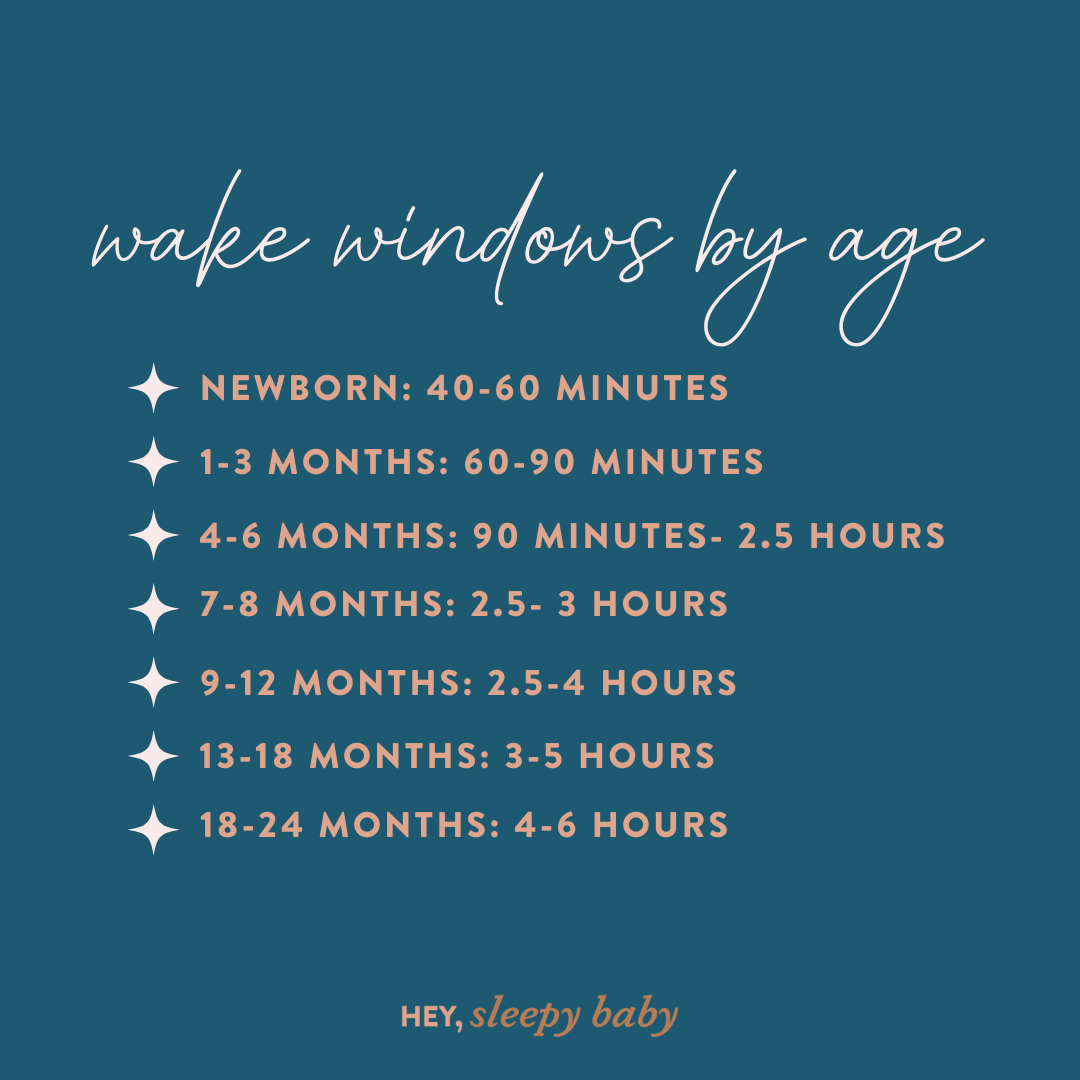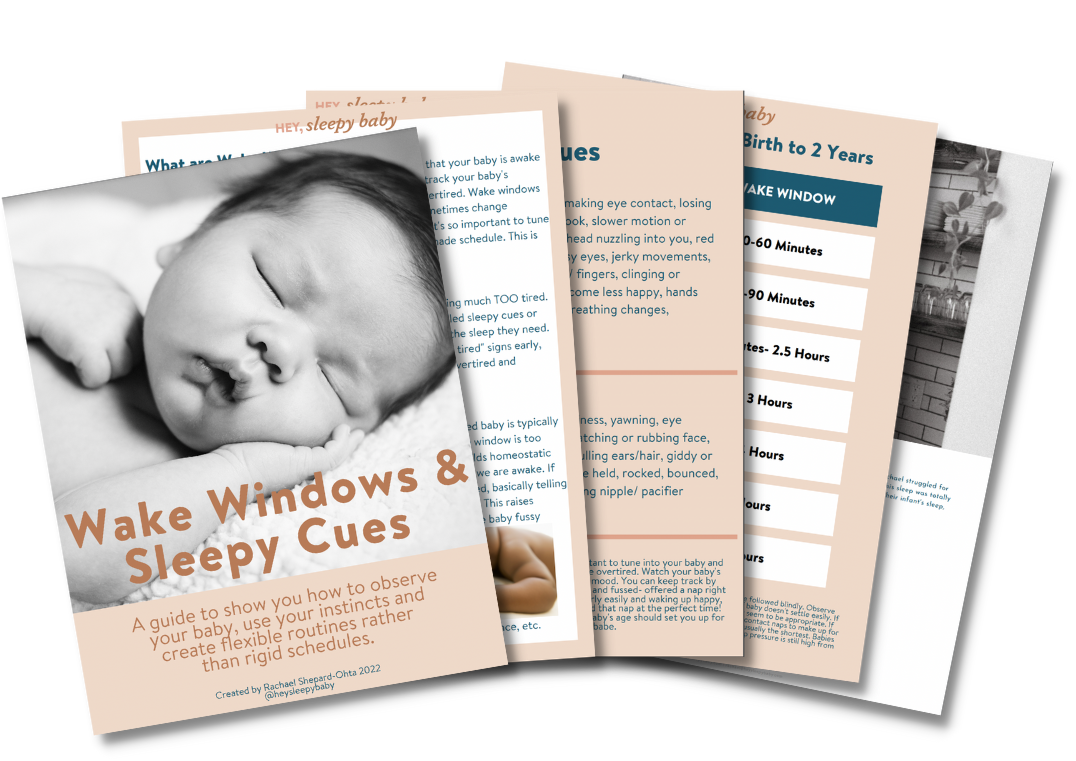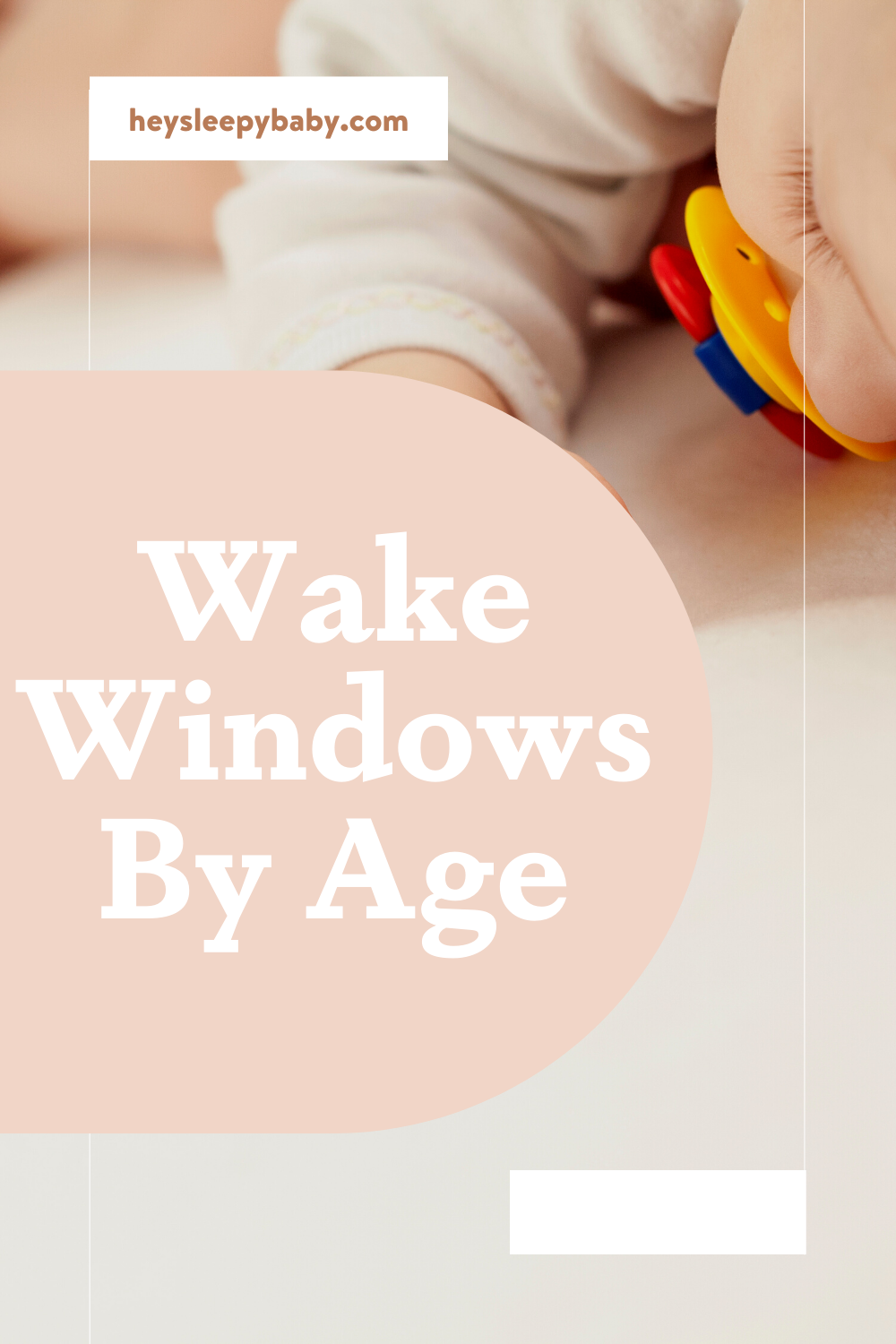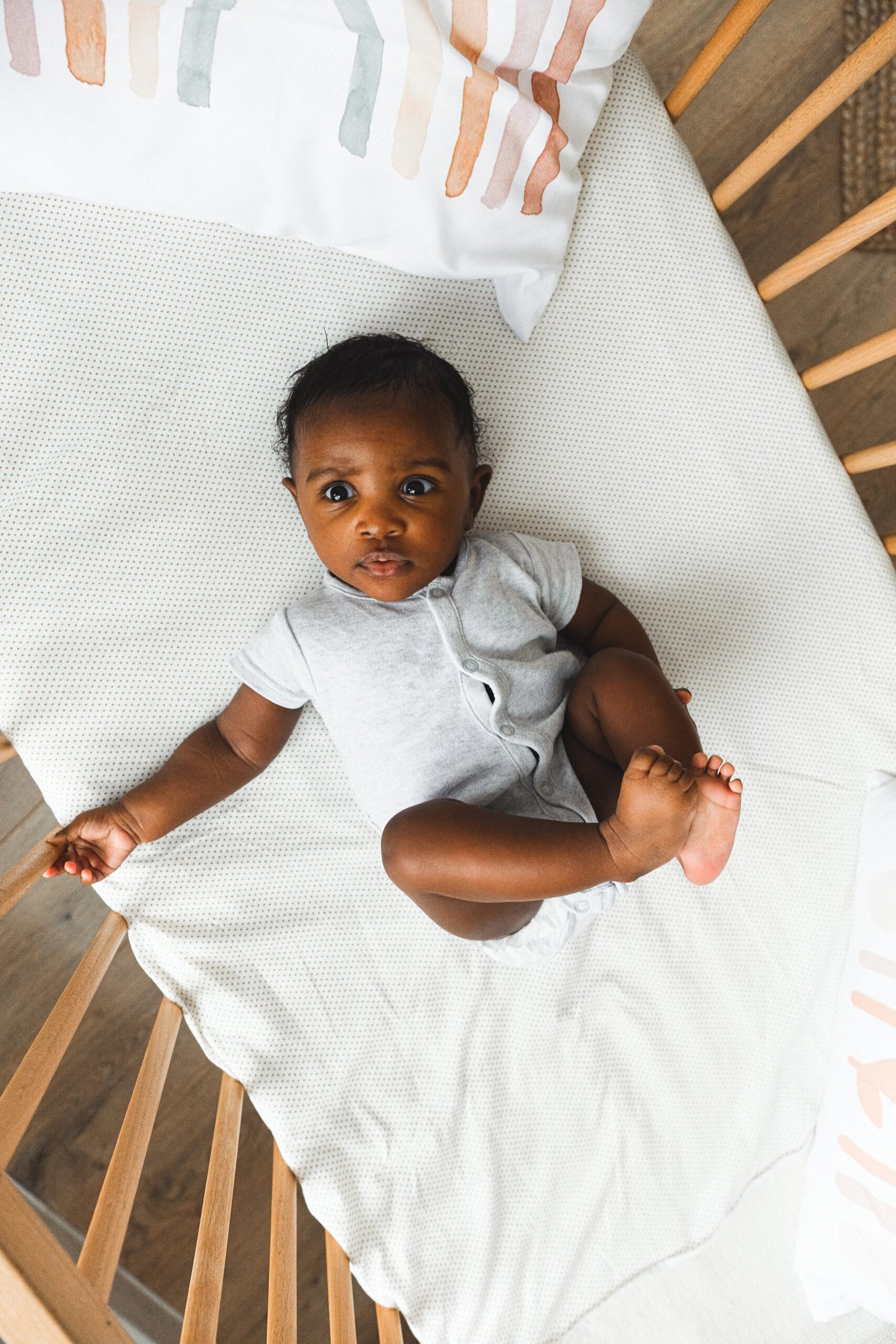in this post:
What’s the real deal with wake windows? How necessary are they? Read on to find out everything you need to know about “wake windows” plus grab a free chart (if that’s your thing!)
What is a Wake Window?
Wake windows are simply the amount of time your baby spends awake in between sleeps. The wake window starts when they wake up for the day or from a nap, and ends when they fall asleep next (either for another nap or bedtime).
Babies need stimulation and sensory experience while awake, and the more time they spend awake the more “sleep pressure” they build. Taking a nap helps release some of that pressure.
The idea behind using wake windows is to avoid babies becoming overly tired and to get them down for naps or bedtime at an age-appropriate time. Wake windows are also helpful to ensure baby is tired enough. If a baby hasn’t had enough awake time, they don’t have enough sleep pressure built up to fall asleep easily and naturally.
Do Wake Windows Matter?
While there may not be specific studies that directly focus on “wake windows” as a term, research in the fields of pediatric sleep medicine, child development, and circadian rhythms has contributed to our understanding of infant sleep patterns and the importance of timing sleep based on wakefulness duration.
Several studies have examined the relationship between sleep duration, sleep timing, and infant behavior. Researchers have investigated factors such as optimal nap durations, ideal awake times between naps, and the impact of sleep timing on infant mood, behavior, and overall development.
For example, studies have shown that overtiredness can negatively impact a baby’s ability to settle and sleep, leading to shorter and more fragmented sleep bouts. This has led to recommendations for caregivers to be mindful of wake windows to help prevent overtiredness and promote more restful sleep for babies.
However, each baby is so unique and has different sleep needs. So, wake windows are not a “must” as they will not work for every baby. They are not something you *have* to use. They might not even be something you SHOULD use! That being said, they can be a helpful tool, and lots of new parents like having them as a guide.
They might work for you, they might not! Wake windows are really just averages. There will always be outliers- those babies who need a little less or a little more sleep than average- and that’s OK! But Wake Windows might just be really confusing or frustrating if this is the case.
Wake windows tend to be helpful in the newborn stage and throughout the first year or so. Once your child is on one nap, you’ll find wake windows become less important. You might find that as your little one reaches toddlerhood you can more easily predict what time they’ll need to nap and go to bed and counting wake time or tracking wake windows might seem unnecessary. Once a child stops napping, you don’t need to use wake windows anymore, though they will likely need an earlier bedtime. I have a blog post all about what to do when this is happening!
Yes! For many babies, we need to be increasing their wake time every 3-4 weeks or so. As babies grow, they need less overall sleep per day and more wake time in between naps. This helps them build more sleep pressure and can help if they are “fighting” sleep. Try increasing by just about 15 minutes every few weeks or if you think your baby needs more sleep pressure. One way to tell it’s time is if it takes a very long time for baby to fall asleep at nap or bedtime. They might just not be tired enough!
If you think your baby needs more awake time but they’re fussy towards the end of their wake window, that is sometimes normal! Fussiness doesn’t always equal “I’m tired.” It can be your baby’s way of asking for some new stimulation (AKA “I’m bored!”). Learning your baby’s sleepy cues can help you determine if they are truly tired or not.
Try going outside or moving to a different spot in the house, bringing out a new toy or book, playing face to face with your baby, singing, having a snack, playing in water, or doing some tummy time.
Here are some other things to know:
-
Newborn wake windows will feel EXTREMELY short for many babies! That is normal. It’s also normal for some newborns to have a hard time napping during the day, and for wake time to feel very long.
-
The first wake window of the day is shortest for many babies.
-
Some babies need a bit shorter of a wake window before bed, others need it to be the longest. Others do well with evenly distributed wake time. There’s no “perfect” schedule.
-
Some babies on two naps do well with a 2 hour, 3 hour, 4 hour wake window pattern, while others do best with equal(ish) wake windows all day.
This is why it’s important to find what works for YOUR baby rather than relying on a pre-made chart alone.
Wake Windows by Age:
Here are the wake windows I typically go by. Remember these are averages and just meant to be a general guide, not a strict rule!
Newborn: 40-60 Minutes
1-3 Months: 60-90 Minutes
4-6 Months: 90 Minutes- 2.5 Hours
7-8 Months: 2.5- 3 Hours
9-12 Months: 2.5-4 Hours
13-18 Months: 3-5 Hours
18-24 Months: 4-6 Hours
If your baby seems to not go by these average wake windows, instead focus on total sleep per 24 hours, remembering that every baby is so different, so wake windows can’t possibly work for everyone and that is ok.
It’s also helpful to watch for your baby’s cues and track a few days of their sleep. This can help you find YOUR unique baby’s ideal “wake window.”
If you’d like a FREE printable version of wake windows and sleep cues up to age 2, click here to download my Wake Windows & Sleepy Cues Guide!
Was this post helpful? Save it for later!
